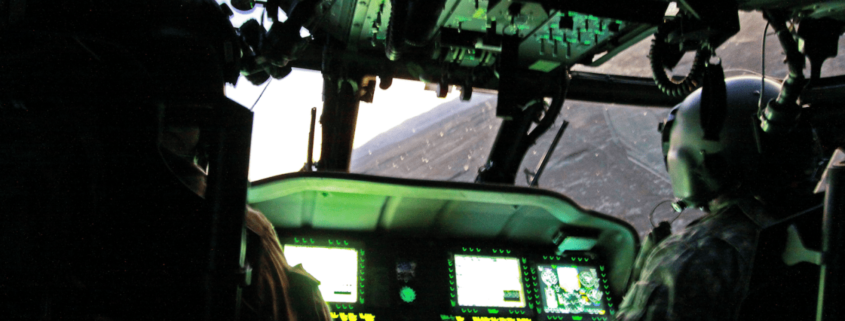US Black Hawks could see robot co-pilots in 2021
By
What exactly is it?
The US Army and Sikorsky are converting a pair of UH-60 Black Hawks to use cutting-edge automation and fly-by-wire controls, with side-by-side formation flights, Breaking Defense reported.
Sikorsky’s automation work has been partially funded for several years by DARPA, which calls the program ALIAS, Aircrew Labor In-Cockpit Automation System.
Still don’t get it?
We’re talking a robotic co-pilot.
The idea is for the ALIAS systems of two aircraft to connect over a short-range, sharing data instantaneously, effectively letting each aircraft see through the others’ sensors and get a much bigger picture of the world, Breaking Defense reported.
Passing every bit and byte of data is impractical over a tactical datalink, so “we’re working on algorithms that allow us to synchronize the world models between all of these aircraft” so they can update each other while using minimal bandwidth, said Sikorsky Innovations director Igor Cherepinsky.
For example, two ALIAS helicopters coming in for a landing amidst a blinding dust storm could automatically warn each other of unexpected hazards and coordinate their movements to reroute around them and land safely, without hitting either the obstacles or each other, Breaking Defense reported.
Today that process would require a hasty back-and-forth over radio as pilots try to make sense of what their sensors are seeing and explain it; ALIAS could simply show both aircrews the same picture of their surroundings.
The ALIAS UH-60A is already flying and the ALIAS UH-60M will fly “sometime early next year,” Cherepinsky said. After that, the plan is for the two helicopters to fly together in formation – Army aircraft rarely go in harm’s way alone – as part of a major Army exercise if possible.
“We are hoping to get these two aircraft to participate together in some Army exercise, [not] just test for test’s sake,” Cherepinsky said.
A successful demonstration could pave the way both for upgrades across the entire helicopter fleet – not just Black Hawks – and for the next-generation Future Vertical Lift aircraft, Breaking Defense reported.
Installing fly-by-wire also makes it possible for a computer to fly the aircraft or help a human to do so, potentially preventing deadly accidents due to human error.
Sikorsky, part of Lockheed Martin, makes the UH-60 – the modern-day mainstay of Army aviation – and is competing to build both the scout and transport versions of FVL.
“Everything that’s happening here,” Sikorsky Innovations director Igor Cherepinsky told reporters this morning, “is going into both of our FVL vehicles – and not just our FVL vehicles, it’s going across our entire product line.”
The company is already working with Erickson to install ALIAS on civilian S-64 helicopters used to fight fires, Breaking Defense reported.
As early as 2018, Sikorsky was able to take a person with no pilot training, hand them a tablet, give them 45 minutes of instruction, and let them control an ALIAS-equipped helicopter.
At that point, the computer was the one really flying the aircraft; the human was just telling it where to go – and they didn’t have to be aboard the aircraft to do that.
But replacing human pilots isn’t actually the primary goal of ALIAS. It’s designed to assist them, Breaking Defense reported.
Sometimes that may mean flying the aircraft while the crew rests, brainstorms tactics, or conducts mission planning. But sometimes it may mean helping them see through sandstorms and dust clouds by fusing sensor data into a clear picture of what’s ahead.
Or it may mean a human has their hands on the controls, but the computer can take over to avoid a collision or crash.
That combination of uninterrupted attention and split-second reaction times is something human brains don’t do well, but computers excel at.



